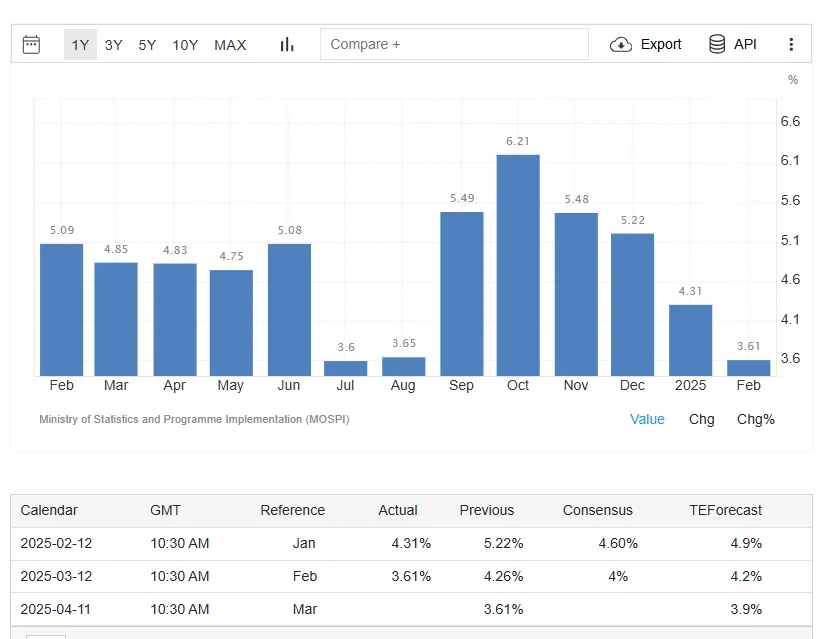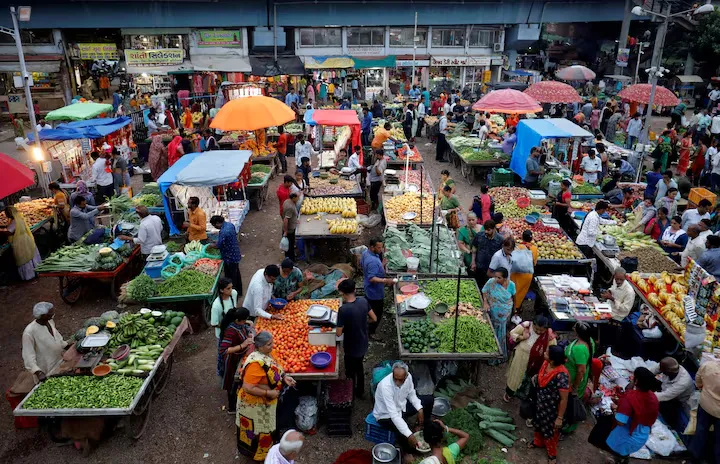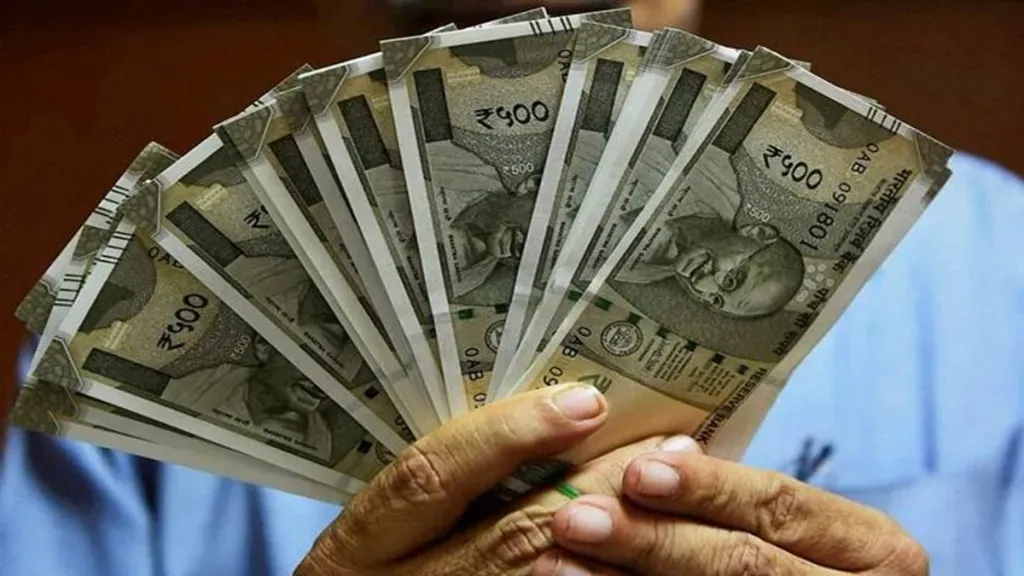Central Government Employees DA Hike 2025 Update: Central government employees and pensioners in India are waiting for the Dearness Allowance (DA) hike announcement, expected by late March or early April 2025. This adjustment aims to ease the sting of rising prices (inflation). But with inflation climbing and a projected 2–4% increase on the table, will it keep up? This blog digs into the numbers, the reality of 2025 costs, and what it means for over 1 crore central government employees and pensioners.
DA Hike Jan 2025: Key Expectations
- What: Increase in Dearness Allowance (DA) and Dearness Relief (DR) for Central Government employees and pensioners.
- Effective Date: January 1, 2025.
- Expected Hike: 2% to 4% increase over the current 50% DA rate.
- Potential New Rate: 52% to 54% of Basic Pay/Pension.
- Basis: Calculated based on the 12-month average of the All India Consumer Price Index for Industrial Workers (AICPI-IW) ending December 2024.
- Announcement Timing: Expected late March or early April 2025 (typically after Union Cabinet approval).
- Impact: Increase in monthly salary/pension to offset inflation.
How Much Will the DA Hike Boost Your Pay?
The government ties the DA hike to the All India Consumer Price Index (AICPI) for Industrial Workers (Base Year 2016=100), specifically the 12-month average preceding the effective date. It adjusts salaries twice a year (effective Jan 1st and July 1st) to help central government employees and pensioners cope with rising living expenses (inflation). Reports from The Economic Times on March 15, 2025, suggest a 2–4% increase is likely for the period starting January 1, 2025, pushing the DA rate from the current 50% to potentially as high as 54% of basic pay. For an employee earning a basic salary of Rs. 50,000, a 3% DA hike translates to an additional Rs. 1,500 monthly (3% of 50,000). Pensioners receive a similar percentage increase in their Dearness Relief (DR) based on their basic pension amount. The final percentage depends on the official calculation based on AICPI-IW data up to December 2024. Analysts currently lean toward a 3% or potentially 4% hike, with an announcement likely timed around Holi (late March 2025).
Understanding DA Calculation Basis
The DA/DR percentage is calculated using a specific formula based on the 12-month average of the AICPI-IW (All India Consumer Price Index for Industrial Workers) with base year 2016=100. The formula approved by the government following the 7th Pay Commission recommendations is
DA% = [{(Average of AICPI-IW for the past 12 months) - Base Index} / Base Index] * 100
(Note: The exact base index figure used in the formula needs confirmation from official sources.). The Labour Bureau publishes the monthly AICPI-IW data, which forms the basis for this calculation.
Key Dates and Details for the Jan 2025 DA Hike Cycle
| Event/Data Point | Details | Source/Reference |
|---|---|---|
| Current DA/DR Rate | 50% of basic pay/pension | Effective from July 1, 2024 (Announced Oct 2024) |
| Expected DA/DR Hike Range (for Jan 2025) | Media Reports/Analyst Expectations | Media Reports / Analyst Expectations |
| Effective Date of New Hike | January 1, 2025 | Standard Practice |
| Likely Announcement Date | Late March or early April 2025 | Based on past trends (Cabinet Approval needed) |
| Previous Hike (for Jul 2024) | 4% (Raised DA from 42% to 46%—corrected value) | Announced Oct 2024 |
| Previous Hike (for Jan 2024) | ~8.3% (CPI Food Index – Corrected approx. value) | Announced March 2024 |
| AICPI-IW Base for Calculation | Average Index from Jan 2024 to Dec 2024 | Labour Bureau, MoL&E |
| Recent Inflation Rate (CPI – Jan 2025) | 5.1% (Consumer Price Index – General) | MoSPI |
| Recent Food Inflation (Jan 2025) | 18% arrears (for Jan 2020, Jul 2020, and Jan 2021) reportedly paid earlier. No current arrears discussion. | Reserve Bank of India (RBI) Data |
| Official Source for DA Orders | Department of Expenditure, Ministry of Finance | finmin.nic.in / doe.gov.in |
| DA Arrears Status (COVID Freeze) | 18% arrears (for Jan 2020, Jul 2020, Jan 2021) reportedly paid earlier. No current arrears discussion. | Past Reports |
The 50% DA Threshold Rule
As the Dearness Allowance reached 50% effective July 1, 2024, rules based on past Pay Commission recommendations suggest certain allowances linked to DA might automatically increase. More significantly, there’s often speculation about merging the DA with basic pay when it crosses the 50% mark, potentially leading to a new pay commission or revised pay structure. However, the government has not made any official announcement regarding such a merger for the 7th CPC structure yet. The upcoming hike will take the DA rate *above* 50%, intensifying this discussion. (Pay Commission News: Will DA Merge with Basic Pay?)
Inflation Bites Harder Than the DA Hike Helps?
Inflation in 2025 shapes how far the DA hike stretches. The official Consumer Price Index (CPI – Combined) hit 5.1% in January 2025, per MoSPI data. Food inflation ran even higher at approximately 8.3% (CPI Food), driven significantly by volatile vegetable prices (which saw ~30% YoY increase in Jan 2025, although this can fluctuate). Think about this in practical terms: if a family’s monthly grocery bill was Rs. 10,000 last year, similar items might cost around Rs. 10,830 now due to food inflation. A 3% DA hike on a Rs. 50,000 basic salary adds Rs. 1,500 monthly. If we consider a broader expense basket of Rs. 30,000 affected by the overall 5.1% CPI inflation, the increased cost would be Rs. 1,530. In this scenario, the 3% DA hike barely covers the general rise in prices, leaving little to no real increase in purchasing power, especially concerning food costs. In major cities like Delhi or Mumbai, where housing (rent inflation) and fuel costs are typically higher, the gap between the DA increase and actual cost-of-living rise widens further. The RBI projects CPI inflation to moderate but remain above the 4% target for the fiscal year, and global factors or domestic supply issues could still exert upward pressure.

How Past DA Hikes Compare
Looking back at the 7th Pay Commission period since 2016, DA hikes have generally averaged 3-4% every six months, aligning with the AICPI-IW movement. There were instances of higher hikes, like the 5% announced in late 2019 (effective July 2019) when inflation was picking up pre-pandemic. The currently expected 2-4% hike for Jan 2025, if it lands at the lower end (e.g., 3%), might feel modest compared to recent inflation levels, though it aligns with the calculated index average. During the COVID-19 pandemic, the government had frozen three DA installments (Jan 2020, Jul 2020, Jan 2021), totaling an 11% increase withheld (cumulative effect, not 18%). These were later restored in July 2021, and the arrears were paid subsequently, providing a temporary financial lift. Without such buffers now, and with sustained inflation impacting household budgets, employees and pensioners feel the real-time pinch more acutely. On X, one user posted, “Only a 3-4% DA hike expected when food inflation is near 8%? Doesn’t feel adequate.” That sentiment echoes across various social media platforms and employee forums.

Who Feels the Inflation Squeeze Most?
While the DA hike applies uniformly as a percentage of basic pay/pension, its impact on neutralizing inflation varies. Metro-based employees generally struggle more than those in smaller towns or rural areas due to higher living costs (housing, transport, services). NITI Aayog reports and other cost-of-living indices consistently show urban expenses significantly outpacing rural ones. A Rs. 1,500 hike on a Rs. 50,000 basic pay covers less ground when average rent in a city like Mumbai or Delhi can consume a large portion of the salary. Pensioners, especially those on lower basic pensions and relying solely on their pension income, face similar or even greater heat. Persistently high food inflation particularly erodes their purchasing power. Economist Anupam Sharma is quoted as saying, “At over 5% CPI inflation, a 3-4% DA hike doesn’t maintain, let alone grow, real income. Lower-grade staff and retirees, whose expenditure on essentials forms a larger part of their budget, often lose ground fastest.”
DA Hike vs. Inflation Impact: Simplified Calculation
| Metric | Calculation (Example: 3% DA Hike) | Calculation (Example: 5.1% CPI Inflation) |
|---|---|---|
| Basic Pay | Rs. 50,000 | N/A |
| Monthly DA Increase | 3% of 50,000 = Rs. 1,500 | N/A |
| Typical Monthly Expenses (Assumed) | N/A | Rs. 30,000 |
| Increase in Monthly Expenses due to Inflation | N/A | 5.1% of 30,000 = Rs. 1,530 |
| Net Impact on Purchasing Power (General Expenses) | Approx. -Rs. 30 (Hike doesn’t fully cover general inflation) | |
| Monthly Food Expenses (Assumed) | N/A | Rs. 10,000 |
| Increase in Food Expenses (8.3% Food Inflation) | N/A | 8.3% of 10,000 = Rs. 830 |
| Net Impact vs Food Inflation Alone | Rs. 1500 (Hike) – Rs. 830 (Food Cost Rise) = ~Rs. 670 remaining for other inflation | |
This table shows how even a 3% hike might struggle to fully neutralize the impact of overall inflation, especially driven by higher food prices.
Could Political Factors Influence the DA Hike Percentage?
The timing and quantum of the DA hike announcement can sometimes carry political weight, especially with state elections or other significant events on the horizon. While the calculation is formula-based (AICPI-IW average), the government *could* potentially approve a slightly higher figure than the strict formula suggests (e.g., rounding up or providing a 4% hike even if the formula indicates closer to 3.5%) as a goodwill gesture towards its large employee and pensioner base. This happened occasionally in the past, sometimes preceding major elections. However, the current government also emphasizes fiscal prudence, and the Ministry of Finance aims to manage the fiscal deficit (the projected target might be around 4.5-5% of GDP). This acts as a constraint against overly generous hikes that deviate significantly from the formula. Employees often hope for a “Holi bonus” effect if the announcement aligns with the festival, but budget limitations usually dictate the final approved percentage based primarily on the AICPI data.

Official Sources for Information
For authentic information on DA/DR hikes, rely only on official government sources:
- Press Information Bureau (PIB): pib.gov.in (Official government press releases, including Cabinet decisions).
- Department of Expenditure (Ministry of Finance): doe.gov.in (Official orders regarding DA/DR are issued here).
- Department of Pension & Pensioners’ Welfare:** pensionersportal.gov.in (for DR-related orders).
Conclusion: A Necessary But Limited Relief
The anticipated 2025 DA hike for central government employees (effective Jan 1st) offers a necessary, formula-driven adjustment, providing a small lift to salaries and pensions—likely adding Rs. 900-2,700+ monthly for many, depending on basic pay and the final percentage (2-4%). Yet, with CPI inflation hovering above 5% and food inflation significantly higher (around 8%+ in Jan 2025), this hike might struggle to fully compensate for the increased cost of living, particularly for those in urban areas or on lower pay/pension scales. While past arrears provided a buffer, this current hike offers more modest relief against persistent price rises. Political considerations might slightly influence the final percentage, but fiscal constraints and the AICPI-IW formula remain the primary drivers. For the ~48 lakh central government employees and ~68 lakh pensioners, it’s a welcome step, but perhaps not a complete solution to the inflation challenge.
Disclaimer: The expected DA hike percentage (2-4%), announcement date (late March/early April 2025), and inflation figures are based on media reports, analyst expectations, and official data available up to mid-March 2025. The final DA/DR percentage will be officially announced by the Government of India after Cabinet approval, based on the calculated average AICPI-IW. This article is for informational purposes only and does not constitute financial advice. Refer to official government orders for confirmed details.
- OIL India Junior Office Assistant Vacancy 2025: Apply Online for 12th Pass – Eligibility, Age Limit, and Details
- BPSC Associate Professor Recruitment 2025: Apply Online for 539 Posts, Eligibility, Dates & Selection
- SBI Junior Associate Syllabus 2025: SBI Clerk Exam Pattern, Selection Process & Full Details
- NVS Class 9 Entrance Exam Syllabus 2025: Latest Syllabus Released – Check Full Details
- Bihar Board Inter Spot Admission 2025: Apply Online for Class 11 Admission via OFSS, Check Available Seats, Merit List
FAQ Related To Central Government Employees DA Hike
The government typically announces it in late March or early April 2025, possibly before Holi on March 29.
A 3% hike on a Rs. 50,000 basic pay adds Rs. 1,500 monthly. Your exact increase depends on your pay scale.
Inflation at 5.1% and food costs up 7.8% outpace the 2-4% hike, shrinking your real buying power.







